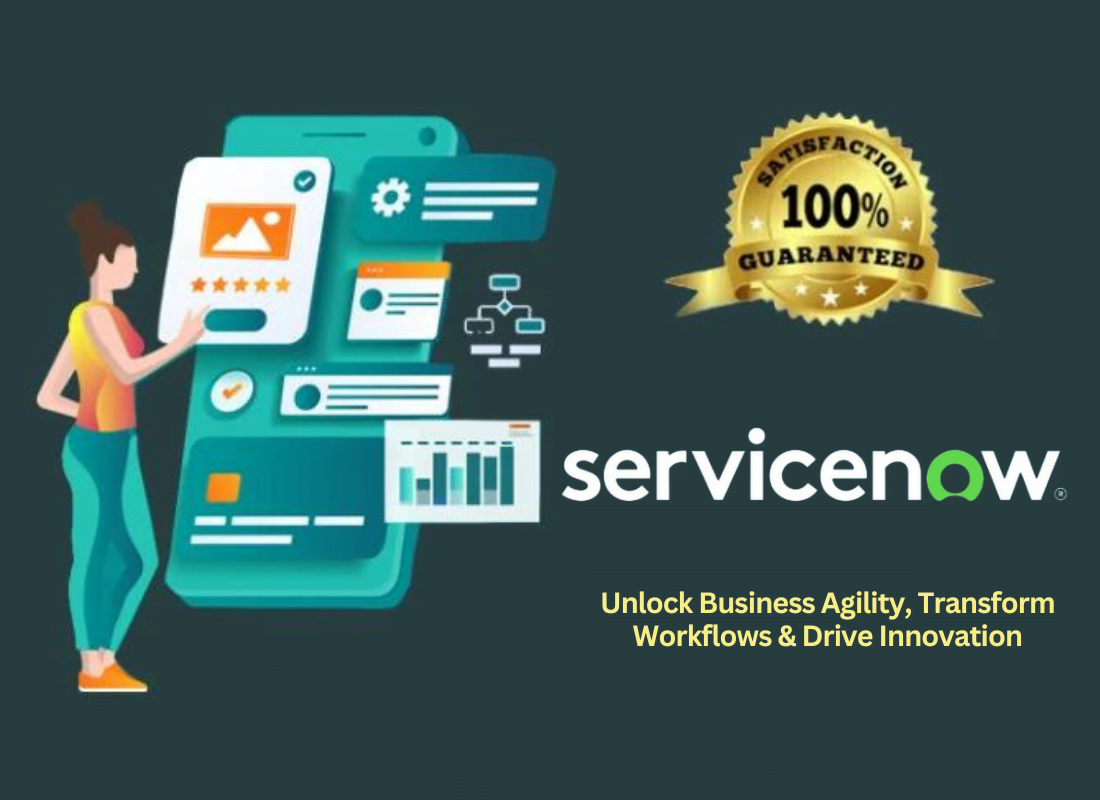What do you think is the real DevOps revolutionary potential in the retail industry, that’s if I may ask? Well, the updated version of this proverb would read something like this: “Software devoured the world, and services, particularly next-generation technology, are consuming software.” Not to mention, in the retail industry, a focus on the customer experience is essential.
The dynamic and ever-evolving environment of consumer wants has been a fundamental driver in the digital DevOps revolution that has been taking place across all sectors throughout the globe. One of the most important industries that have embraced digitalization in order to become closer to its customers, and also to better satisfy their unique requirements.
As well as in order to stay up with current retail trends in the retail sector. Where there is digitalization, there is also careful acceptance of technical advancements. The retail sector is now ranked third in the DevOps application market despite the fact that DevOps has just emerged as the most urgent customer-oriented technology that businesses are adopting.
What DevOps Are All About
According to the synopsys team, DevOps (a portmanteau of “development” and “operations”) is the combination of practices and tools designed to increase an organization’s ability to deliver applications and services faster than traditional software development processes. This speed enables organizations to better serve customers and compete more effectively.
In simple terms, DevOps is about removing the barriers between traditionally siloed teams, development, and operations. Under a DevOps model, development and operations teams work together across the entire software application life cycle, from development and test through deployment to operations.
Realistically, most DevOps practices rely on effective tools to help teams rapidly and reliably deploy and innovate for their customers. These tools should automate manual tasks, help teams manage complex environments at scale, and keep engineers in control of the high-velocity pace that is DevOps. Learn how to find the right DevOps tools in detail.
The DevOps workflow consists of these key phases:
- Planning the next iteration of the product’s development
- Building the code
- Testing and deploying to the production environment
- Delivering product updates
- Monitoring and logging software performance
- Gathering customer feedback
For your information, DevOps is the direct descendant of agile software development, born from the need to keep up with increased software development velocity and throughput agile methods. Advancements in agile development highlighted the need for a more holistic approach to the software delivery life cycle, resulting in DevOps.
The Real DevOps Revolutionary Potential In The Retail Industry
Significant progress has been made in the implementation of retail technology in India. Eventually, which helps the country’s retail industry by providing services such as digital ledgers, inventory management, payment systems, and tools for logistics and fulfillment. But, there are some key reasons why retail and DevOps are a natural match: Two sides of the same coin.
Focusing on the customer experience and doing research into how technology may provide personalized service that can expand to meet demand are two strategies that businesses use to distinguish themselves from competitors and build client loyalty. A majority of businesses are already implementing their very own unique digital transformation methods.
Perse, in order to remain competitive and shorten the amount of time it takes to bring a product to market. However, designing a system that is so dependable and sturdy calls for a lot of perseverance. It’s, for this reason, that most eCommerce retailers, DevOps consulting services companies, and other stakeholders are all combining DevOps technology with retail processes.
In particular, so that they can best improve their customer’s User Experience (UX), personalize interactions at every stage of the sales funnel, and elevate their fulfillment processes. All of this is being done in an effort to make all of this possible as quickly as possible. Automation is essential to the functioning of digital processes.
Automation is included in each step of the development process in DevOps, and in retail, automation allows more rapid and efficient processes at each level of the company by making use of data analytics. That said, let’s now get an understanding of the principles of how the processes in retail and DevOps may be bonded together in order to achieve ROI for retailers:
1. Seamless Collaboration
Collaboration between software development teams and IT operations teams has given rise to the DevOps methodology, which aims to provide high-quality code to end users as quickly as feasible.
The modern DevOps lifecycle is intended to optimize and guarantee the speedy delivery of only high-quality code to end clients, and it is developed with these two goals in mind. How? Well, by increasing the amount of developed code that is used to offer more important products to customers in a shorter amount of time.
In the retail industry, roughly half of all inventory products either do not sell or are eventually sold at significantly reduced rates. When contrasted with the predicted profit, this results in a loss of money for owners of retail businesses. It is essential to simplify the processes involved in inventory management.
Why? In order to facilitate more sales at the beginning of each season at more favorable pricing, so producing a significantly improved profit margin. As a point of similarity, we can state that the primary time to react to the requirements of the market is essential in order to construct a competitive edge for either software or retail enterprises.
2. Services Reinforcement
One of the primary reasons why high-performing firms use DevOps is to cut them to repair downtimes. This is one of the most essential aspects. Any application that suffers a Denial-of-Service attack will have a proportional number of its users defect to a competing service. It is exactly the same as in the retail industry, where owners often confront the challenge head-on.
Such as the challenges of not having the appropriate item available at the appropriate location. Discovering the most advanced technology for product allocation that can reliably speed up the production cycle is the key to success in this game. DevOps practices such as continuous integration and continuous delivery let DevOps teams deliver rapidly, safely, and reliably.
While, at the same time, monitoring and logging toolkits help DevOps teams track the performance of applications — so that, as a result, they can react quickly to problems, adjust places where change is needed, and implement new ways fast.
3. DevOps Culture
DevOps makes certain that a high-quality product is constructed by using agile code processes, automation, and deployments in conjunction with continuous integration and continuous delivery cycles. A product that can serve customers more quickly, while also reducing the amount of money spent on technology and being cost-effective.
A fantastic service, particularly one that is prompt and quick, is essential for the retail industry since clients who seek a product in one location may end up looking for it at a different shop owing to its unavailability in the first location. In order to prevent running out of stock, you should try to provide customers with a much greater level of service.
Basically, this will ultimately result in a higher Return On Investment (ROI) as per your input. But, it is also very essential to continually monitor the purchasing preferences of customers while they are shopping in shops. Good communication plus collaboration in marketing and sales allows all organization parts to align more closely on goals and projects.
4. Communication Automation
Communication and collaboration are keystones of the set of DevOps practices. Automation of the software delivery process establishes quality collaboration. Especially, by physically bringing together the workflows and responsibilities of development and operations. Generally, communication cuts across developers, operations, and even other leadership teams.
Keep in mind, that in the retail industry, there are not enough people to go over work, and there is not enough time, therefore errors are made often due to repeated physical labor. This takes up the time that merchants might be used to concentrate on innovation and development. The DevOps consulting company’s goal is to eliminate the need for rework.
Particularly, by establishing automated gates that let only high-quality work into production. Retail businesses really need to have software on hand that is geared toward the management of big amounts of inventory data and the provision of insights derived from data analysis in a way that is both time and money efficient.
5. Microservices Deployment
The microservices architecture is a design approach to build a single application as a set of small services. Each service runs in its own process and communicates with other services through a well-defined interface using a lightweight mechanism. You can use different frameworks or programming languages to write microservices and then deploy them independently.
More so, either as a single service or as a group of services. Organizations may also use a microservices architecture to make their applications more flexible and enable quicker innovation. Typically, each service is paired with a small, agile team who takes ownership of the service. In addition, there’s also the need for continuous integration and continuous delivery.
In that case, DevOps practices such as CI/CD let DevOps teams deliver rapidly, safely, and reliably. CI is a software development practice where developers regularly merge their code changes into a central repository, followed by automated builds and tests. The key CI goals are to find/fix bugs quicker, improve software quality, and reduce the resources in use.
Equally important, it also reduces the time it takes to validate and release new software updates. Not forgetting, CD expands on CI by deploying all code changes to a testing or production environment after the build stage.
Summary Thoughts:
On one hand, several key practices can help organizations innovate faster by automating and streamlining the software development management process. One fundamental DevOps practice is to perform very frequent but small updates. Bear in mind, that these updates are usually more incremental than the updates performed under traditional release practices.
On the other hand, most organizations using a DevOps model deploy updates much more often than organizations using traditional software development practices. By capturing and analyzing logs generated by applications, DevOps teams can better understand how software changes or updates may affect users. So, with that in mind, what’s your take on DevOps?
Well, you are free to share some of your additional suggestions, opinions, recommendations, or even contribution questions (for FAQ Answers) in our comments section. But, if you’ll need more support, you can as well Get In Touch and let us know how we can help or even sort you out. And now, until the next one, thanks for taking the time to read this blog guideline.




